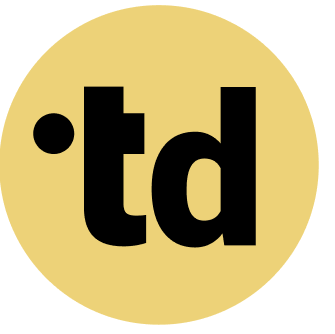Key Takeaways
Effective human-AI teamwork requires treating AI as a collaborator with a defined role, not just a tool.
Clear role definition is crucial: assign data-heavy, repetitive tasks to AI and strategic, creative work to humans.
Building trust through transparent communication protocols and strong ethical governance is essential for successful AI integration.
Teams today face constant change and information overload, with 45 percent of Germans feeling skeptical about new AI technology. Many leaders see AI as just another tool, missing its potential to be a true collaborator. The real challenge is not just adopting AI, but redesigning teamwork itself. This requires a new approach to organizational development, one that defines clear roles and fosters trust. By mastering human-AI collaboration, Team Architects can reduce complexity by over 30 percent and build resilient, future-ready teams. This is how you make bots and humans click.
Practical Framework for Team Architects
As a Team Architect, you can apply these principles to your organization:
- Map Current State: Document existing roles and responsibilities using a tool like teamdecoder.
- Identify Gaps: Where are roles unclear? Where do humans and AI agents overlap?
- Define Clear Boundaries: Specify which tasks are handled by humans vs. AI agents.
- Create Accountability: Assign clear decision rights for each role.
- Iterate and Improve: Continuously refine based on team feedback.
Integrate AI as a Teammate, Not Just a Tool
The conversation around AI in the workplace is shifting. It's no longer about replacement; it's about collaboration. Germany's AI market is set to exceed €32 billion by 2030, creating millions of new roles. Viewing AI as a dynamic team partner delivers actionable insights and reduces decision-making complexity by a significant margin. Successful integration depends on treating AI as a collaborator with a defined role. This mindset shift is the first step in building effective hybrid human-AI teams. This approach prepares your organizational structure for a new kind of efficiency.
Define Roles to Make Bots and Humans Click
Clarity of roles is essential for effective human-AI teamwork. A clear division of labor can boost team productivity by at least 15 percent. AI excels at data-heavy, repetitive tasks, freeing up human capacity for strategic work. One study found AI has a pronounced influence on tasks related to computer use and information processing. Assigning tasks based on strengths prevents overlap and reduces employee burnout by a significant portion. You can try teamdecoder for free to map these new roles. Here is a simple breakdown of how to allocate responsibilities:
- AI's Role: Handles data analysis, automates report generation, manages scheduling, and monitors real-time performance metrics for over 100 data points.
- Human's Role: Focuses on creative problem-solving, strategic decision-making, building client relationships, and providing ethical oversight for at least three key projects.
- AI's Role: Conducts initial research and summarizes findings from thousands of documents in under five minutes.
- Human's Role: Interprets AI-generated insights, applies contextual understanding, and leads team innovation sessions with four to six members.
This clear separation of duties is foundational to designing effective workflows and ensuring every member contributes their highest value.
Establish Protocols for Transparent Interaction
Trust is the currency of high-performing teams. When integrating AI, transparency is non-negotiable. The EU AI Act outlines seven key principles, including transparency and human oversight, to build trust. Teams need clear rules for how, when, and why AI is used in decision-making processes. Implementing a clear protocol can increase adoption rates by 40 percent. For example, a marketing team could require that all AI-generated content drafts are reviewed by at least two human editors. This human-in-the-loop system ensures quality and accountability. These protocols for human-AI interaction prevent misunderstandings and build confidence in the technology.
Implement Governance for Ethical AI Use
Without proper governance, AI tools can perpetuate biases and create risks. Nearly two-thirds of Germans (a significant portion) call for an institution to oversee the ethical use of AI. As a Team Architect, you can establish this oversight within your organization. A cross-functional AI governance task force can conduct regular checks to ensure fairness and compliance. Companies with an AI code of ethics report a significant number of fewer implementation issues. This framework should define data privacy standards, accountability for AI errors, and principles of non-discrimination. Proper governance is not a barrier; it is an enabler of sustainable and responsible human-AI teamwork.
Upskill Your People for a Hybrid Future
Technology is only as valuable as the people using it. The World Economic Forum predicts AI will create the vast majority of jobs globally by 2030 while displacing the vast majority of roles. This highlights a massive need for upskilling. Team Architects must champion continuous learning to build AI literacy across the entire workforce. Our Playful Tip: Create a reverse mentoring program where AI specialists coach executives. Deep Dive: Focus on skills AI cannot replicate, such as emotional intelligence, creativity, and complex probl Here are key areas for your training programs:
- AI Literacy: Foundational training on what AI can and cannot do for all the vast majority of employees.
- Prompt Engineering: Teaching team members how to communicate effectively with AI to get desired results, improving output quality by a significant portion.many.
- Data Interpretation: Building skills to critically analyze AI-generated data and identify potential biases in at least two dashboards.
- Ethical Guidelines: Training on the company's AI governance framework and responsible use policies.
Investing in these skills ensures your team is prepared for the future of work and can fully leverage the power of your new AI teammates. With the right skills, your team can master working with AI.
Try teamdecoder for free - shape your team and make change feel like play!
For more on building your team, download the Dream Team Builder guide.
More Links
Wikipedia offers a comprehensive overview of Human-Computer Interaction.
Federal Statistical Office of Germany (Destatis) provides a press release with statistical data relevant to Germany.
acatech – National Academy of Science and Engineering discusses the implementation of AI in companies and the importance of a human-centered approach to cultural change.
Fraunhofer IAO (Institute for Industrial Engineering) presents research and projects related to the future of work and innovation.
Bitkom shares a press release stating that one-fifth of employees receive AI training in their jobs.
Bertelsmann Foundation offers a publication about AI jobs in Germany, indicating stagnation rather than a boom.
Federal Institute for Occupational Safety and Health (BAuA) provides information and publications on artificial intelligence and its impact on occupational safety and health.
SimZentrum details a project called NAMEKI, focusing on a specific application or research area related to AI.
DGUV Forum features an article about the future of work in the age of AI.
FAQ
How can we measure the success of human-AI teamwork?
Success can be measured through a combination of quantitative and qualitative metrics. Track productivity gains (e.g., tasks completed, time saved), project outcomes, and ROI. Also, gather qualitative feedback on employee satisfaction, perceived workload reduction, and improved decision-making quality.
What is the first step to integrating an AI agent into my team?
The first step is to identify a specific, high-impact problem that AI can help solve. Start with a small pilot project to automate a repetitive task or provide data insights. This allows the team to learn and adapt in a low-risk environment before scaling up.
How do we maintain team morale when introducing AI?
Maintain morale by communicating openly about the purpose of AI-to augment, not replace, human capabilities. Involve the team in the integration process, provide comprehensive training, and highlight how the technology will reduce tedious work, allowing them to focus on more engaging and valuable activities.
What are the most common challenges in human-AI collaboration?
Common challenges include a lack of trust in AI, unclear roles and responsibilities, potential for algorithmic bias, and insufficient employee training. Overcoming these requires strong governance, transparent processes, and a commitment to upskilling the workforce.





